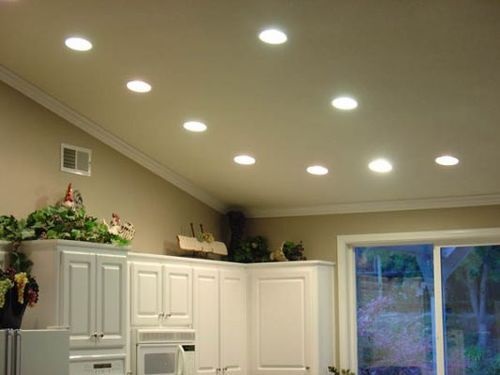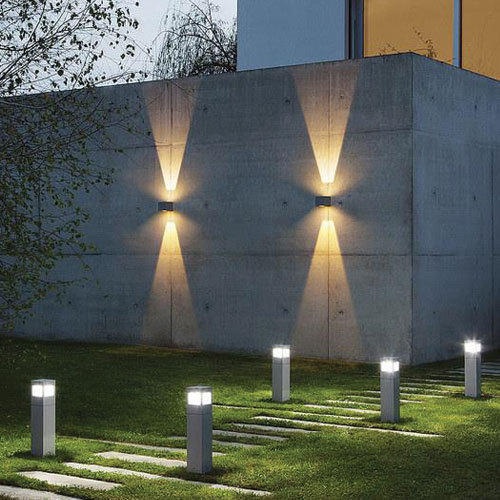Having proper lighting can significantly impact the look and feel of your space.
For that, you need to be aware of which lighting is suitable for the space and your requirements.
When it comes to choosing lights, there are several options to choose from.
To help your decision-making process easier, we curated this article for you. In this write-up, we will explore the different lighting options. This will help you narrow down your selection.
Let us try to find some light together.
Lights are available in different types to illuminate your space and complement your lifestyle. Below are the most common ones to choose from based on your requirements: As the name says, these lights are for brightening your space and elevate the atmosphere inside your rooms. Incandescent bulbs are the most common indoor lights used in many homes. The other popular indoor lights include CFLs and LEDs. Let us have a look at the different kinds of indoor lights and their significance: Incandescent bulbs look similar to traditional bulbs and are the most familiar ones. These lights consist of a tungsten filament. When electricity runs through this thin wire, it gets heated and starts glowing, further producing light. The incandescent bulbs are less energy-efficient and produce a lot of heat when operating. These lights work for about 700 – 1000 hours only. Incandescent bulbs are cost-effective. Incandescent lights are most suitable for residential buildings. These lights use fluorescence to produce visible light. Hence, the name fluorescent. The fluorescent bulbs or tubes contain low-vapour mercury and a phosphor coating inside. When electricity passes through mercury, it produces ultraviolet (UV) light. Because of the coating, these UV rays turn into visible light. Fluorescent bulbs are high energy-efficient than incandescent lights. These lights have a longer lifespan, which is six times that of a regular incandescent bulb. The fluorescent lights are cheaper than regular lights. The fluorescent lights are most suitable for installing them in offices, workshops, kitchens, and hallways. The compact fluorescent lamps or CFLs are a replacement for incandescent lamps. The compact fluorescent lamps usually consist of two or three tubular loops, and hence they look similar to incandescent bulbs. They emit light from the mix of phosphor inside the bulb. The CFLs are high energy-efficient than fluorescent lights. These lights have a longer lifespan, which is eight to fifteen times the shelf life of incandescent lamps. They can last up to 10,000 hours. The CFLs are less expensive than the LED lights. The CFLs are most suitable for installing them in larger spaces like kitchens, large rooms, and basements hallways. Their best use can be for task lighting, overhead lights, etc. Light-emitting diode (LED) bulbs are the most popular lights that are in use today almost across the world. The LEDs are semiconductors wrapped in plastic. These do not have a filament like a lightbulb. Instead, they have electrons that create photons, i.e., light. These lights require very little energy to create the same amount of brightness as incandescent lights. The LED bulbs are highly energy-efficient lights of all. The LED bulbs last longer than the regular ones. The LEDs were initially very expensive (almost double) than the incandescent bulbs. However, the prices have come down after they earned significance in the market. They are more costly than the CFLs. You can use the LED bulbs anywhere just like you previously used the incandescent lamps. The halogen lights are an advanced version of incandescent bulbs. These lights consist of tungsten filament which comes enclosed in a quartz capsule filled with halogen gas. Hence the name, halogen lights. These lights work similarly to incandescent lights. When electricity runs through this thin wire, it gets heated and starts glowing, further producing light. However, these are smaller in size when compared to incandescent bulbs. The halogen lights are more energy-efficient than a traditional incandescent bulb. They have a shorter lifespan, i.e., they last up to 2500 hours. The halogen bulbs are cost-effective and affordable than CFLs and LEDs. The halogen bulbs are ideal for indoor and outdoor floodlight applications. You can even use them for accent lighting. Outdoor lighting or exterior lighting is yet another crucial type of lighting that complements the buildings. They enhance the look and add security during the night time. Although they are different from the indoor lights, they are available in different kinds. Let us have a look at what they are and discuss in detail about each type: The metal halide lights are the High Intensity Discharge (HID) lights. Also known as MH, these lamps produce light when the electric current passes through a combination of mercury and metal halide gas. These lights are almost three to five as efficient as incandescent bulbs. The metal halide lamps have a longer lifespan which is about 10 times longer than traditional incandescent bulbs. The metal halide bulbs are very expensive because of the high manufacturing costs. You can use metal halide lamps both indoors and outdoors. They are ideal for stadiums, construction sites, and parking lots. The high pressure sodium lights are the most commonly used streetlights across the world. Even these are a part of the HID family of bulbs. Also known as HPS lights or HPS lamps, these lights operate at high internal pressure. They consist of an arc tube filled with xenon gas and sodium mercury amalgam, and a ballast. The combination of these gases and metals inside the glass tube produces orange-white light generally found in light streets. The high pressure sodium lights have high energy efficiency. They have a longer lifespan, which is about 24,000 hours. The HPS lights are cheaper than the LED lights. However, they require frequent replacement and have associated labour costs for the same. The HPS lights are ideal for street lighting and security lighting. The low pressure sodium (LPS) lights are similar to the high pressure sodium (HPS) lights. Also known as LPS lights, these lights operate similarly to HPS lamps. They consist of a borosilicate glass tube filled with solid sodium metal inside. When you turn on the lamp, this metal vapourizes producing bright or monochromatic yellow light. The low pressure sodium lights have an excellent energy efficiency of all the available lighting sources. They have an average lifespan of about 14,000 to 18,000 hours. The HPS lights are cheaper than the LED lights. However, they require frequent replacement and have associated labour costs for the same. The LPS lights are ideal for street lighting, highway lighting, and security lighting. The LED Street lamps are nothing but integrated lights. The LED Street lamps are those lights that use the LED technology as the light source. They have higher energy efficiency when compared to the high pressure sodium (HPS) and metal halide (MH) lamps. The LED street lamps have the longest life span of about 10 to 15 years. These lights are expensive than the other lighting systems. However, they have low maintenance and energy costs. They are more economical in the long run. The LED street lights are ideal for street lighting, road, and highway lighting. PCA LED lamps or Phosphor-Converted Amber LED Street Lamps are high-power LED lights that have been in the market for the last three years. The PCA LEDs use phosphor for converting the blue light to, yellow, amber light, etc. Hence the name Phosphor-Converted Amber LEDs. These lights are highly efficient lighting solutions. They have a longer lifespan. The PCA LEDs fall on the expensive side. The PCA LED lights are ideal for street lighting, road, and highway lighting. You can use these lights for decorative purposes, as well. The narrow-band amber (NBA) LED street lights, or NBA LEDs are the new LED innovation. Unlike PCA LED lights that use phosphor, these street lights emit the yellow-amber coloured light directly. The NBA LED lights are very energy-efficient. They have a longer lifespan. Just like the PC amber LED lights, even the NCA LEDs fall on the expensive side. The NBA LED lights are ideal for street lighting, road, and highway lighting. Wrapping up, there are different types of lighting systems available in the market, each for a specific purpose. This article dealt with everything you need to know about the different types of lights. Now that you are aware of all the lights, choosing proper lighting for your home and other commercial purposes will no longer be an overwhelming task. Let us know what would you choose and prefer by posting your options in the comments. Let us know if you find this article helpful, insightful, and informative. Let us know if you have any queries or need more information. Do not hesitate to add your inputs to the article. Your feedback matters a lot to us, and let us know if we missed out on any points. We would love to hear and learn from you. Stay healthy and stay safe!!!Types of Lights
1. Indoor Lights
2. Outdoor Lights
Indoor Lights
a) Incandescent
Construction
Efficiency
Lifespan
Cost
Ideal For
Advantages
Disadvantages
b) Fluorescent
Construction
Efficiency
Lifespan
Cost
Ideal For
Advantages
Disadvantages
c) Compact Fluorescent Lamps
Construction
Efficiency
Lifespan
Cost
Ideal For
Advantages
Disadvantages
d) LED
Construction
Efficiency
Lifespan
Cost
Ideal For
Advantages
Disadvantages
e) Halogen
Construction
Efficiency
Lifespan
Cost
Ideal For
Advantages
Disadvantages
Outdoor Lights
a) Metal Halide
Construction
Efficiency
Lifespan
Cost
Ideal For
Advantages
Disadvantages
b) High Pressure Sodium (HPS)
Construction
Efficiency
Lifespan
Cost
Ideal For
Advantages
Disadvantages
c) Low Pressure Sodium (LPS)
Construction
Efficiency
Lifespan
Cost
Ideal For
Advantages
Disadvantages
d) LED Street Lamps
Construction
Efficiency
Lifespan
Cost
Ideal For
Advantages
Disadvantages
e) Phosphor-Converted Amber (PCA) LED Street Lamps
Construction
Efficiency
Lifespan
Cost
Ideal For
Advantages
Disadvantages
f) Narrow-Band Amber (NBA) LED Street Lamps
Construction
Efficiency
Lifespan
Cost
Ideal For
Advantages
Disadvantages
Conclusion



